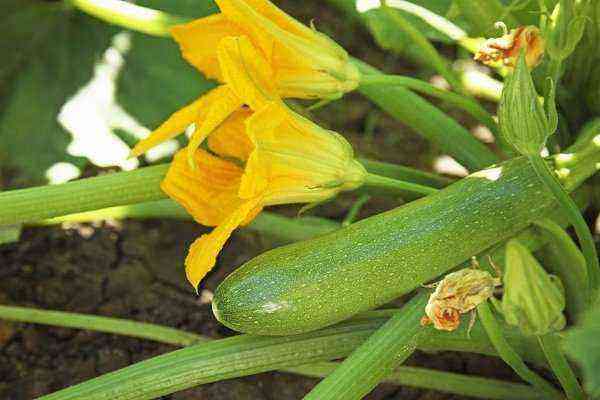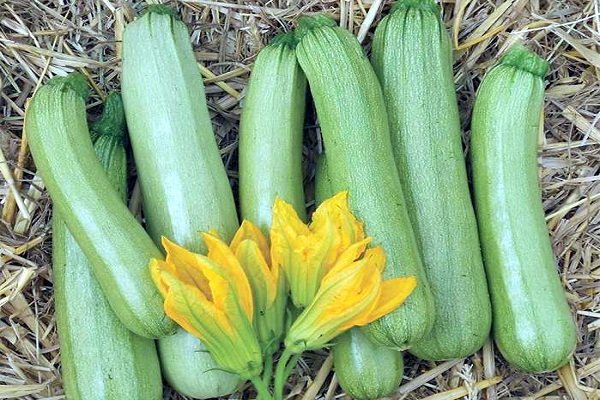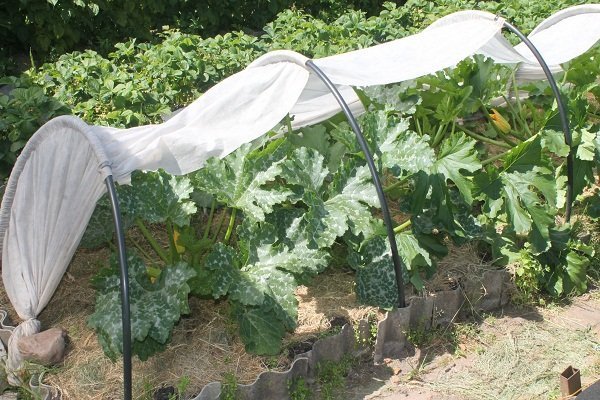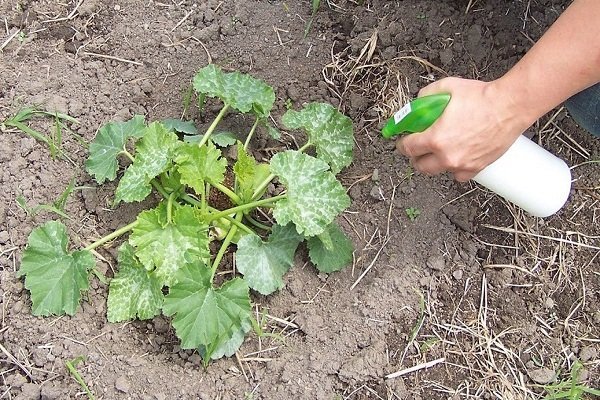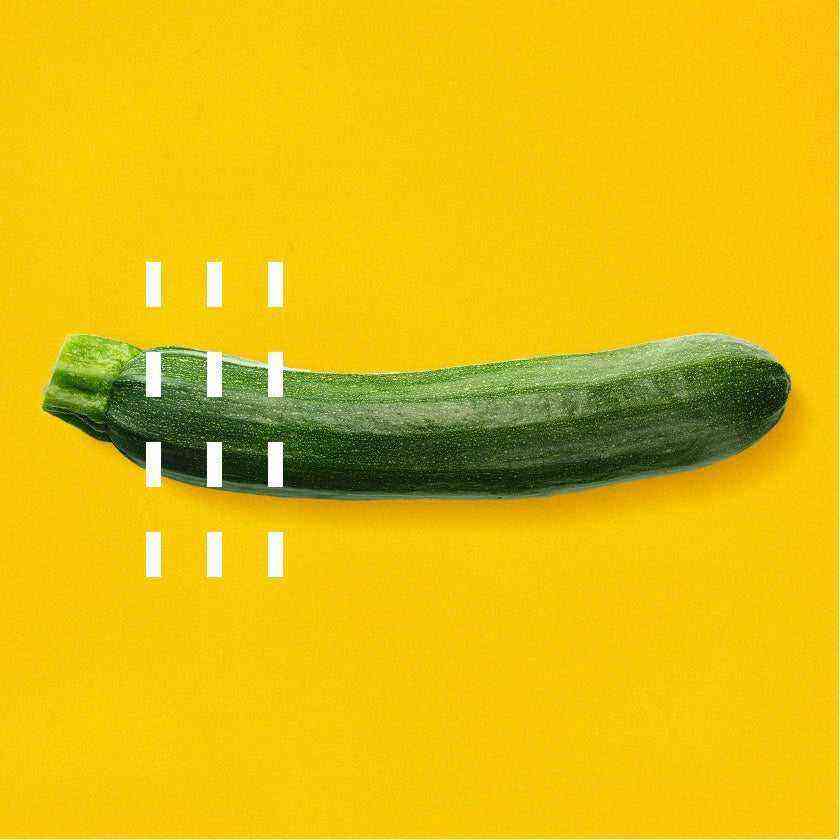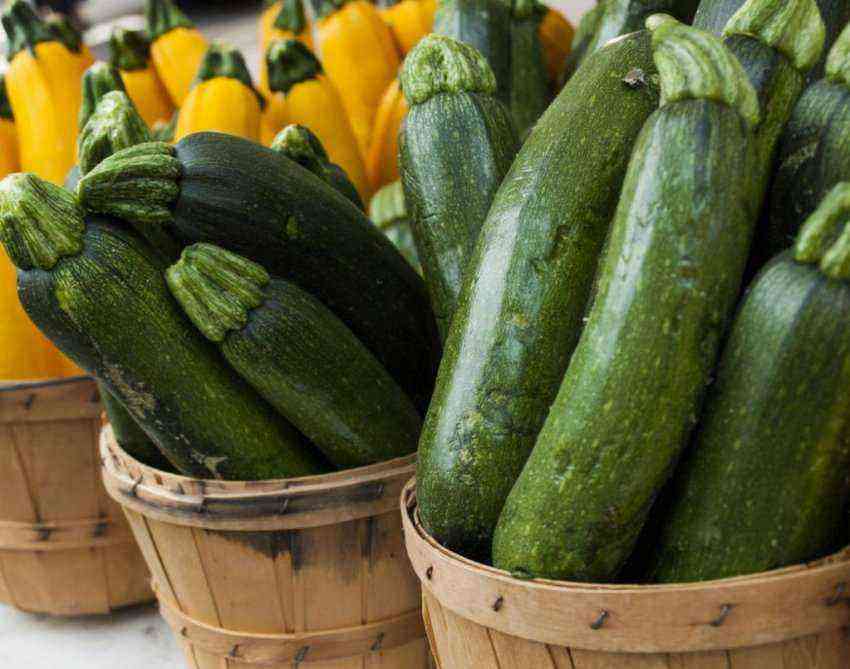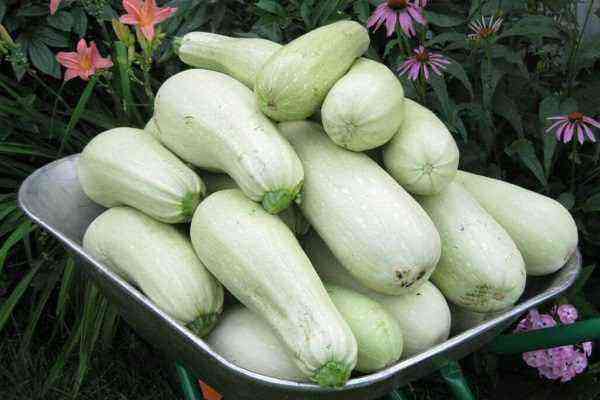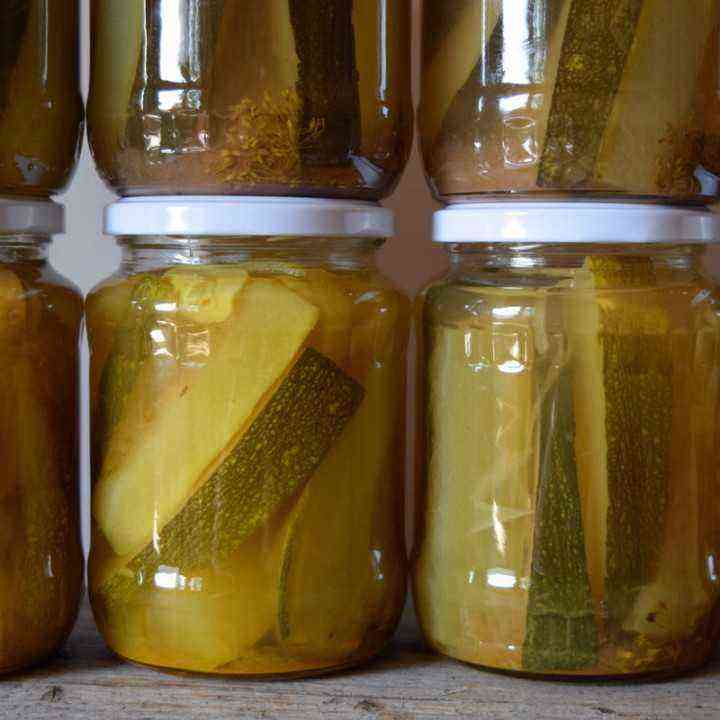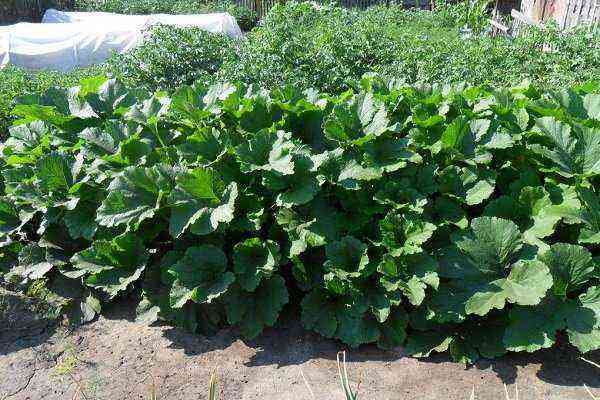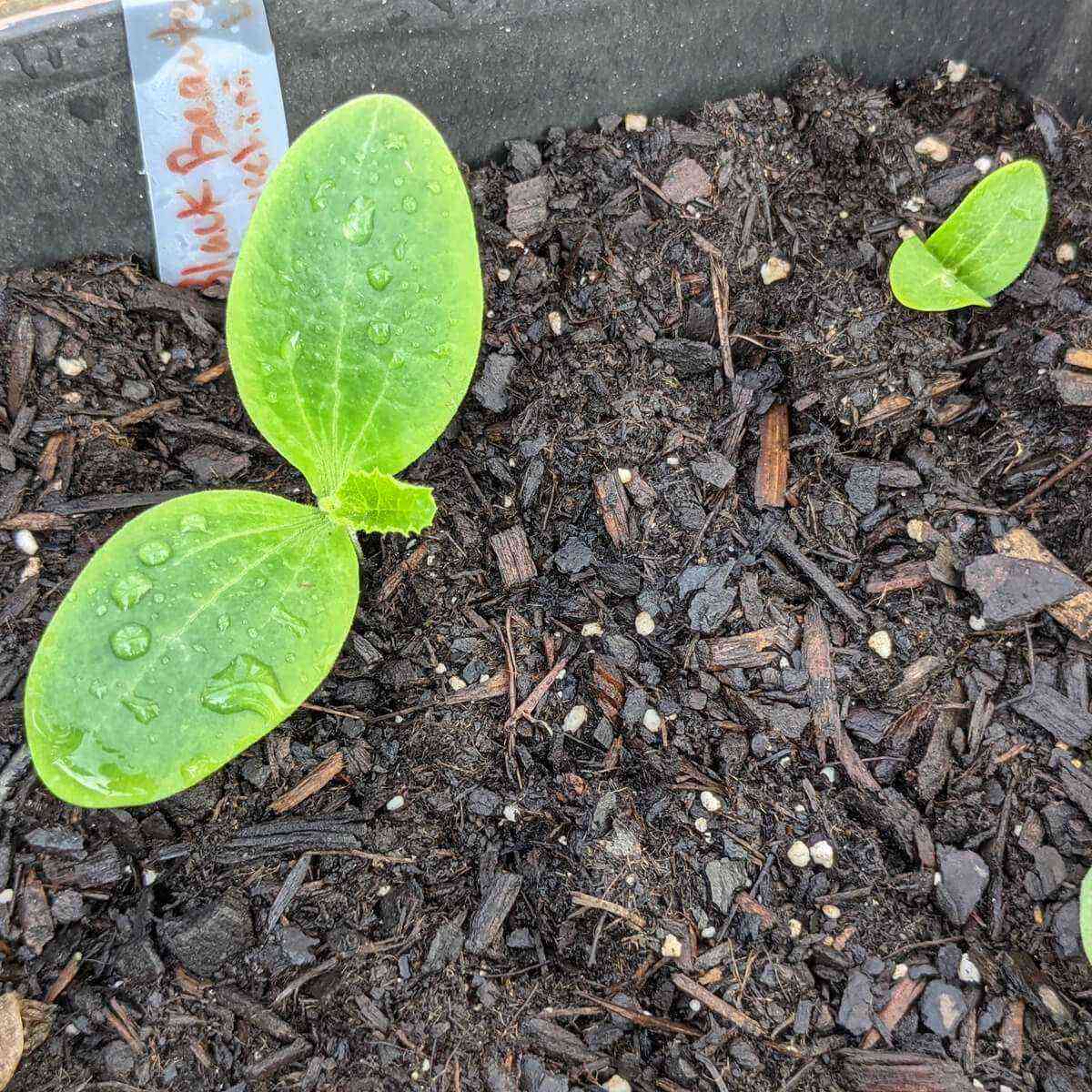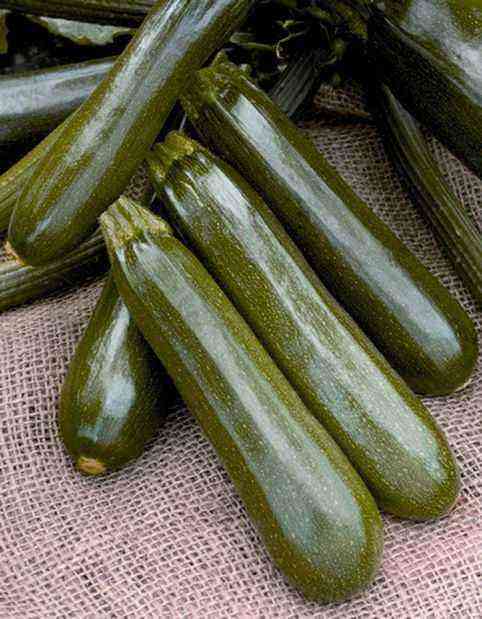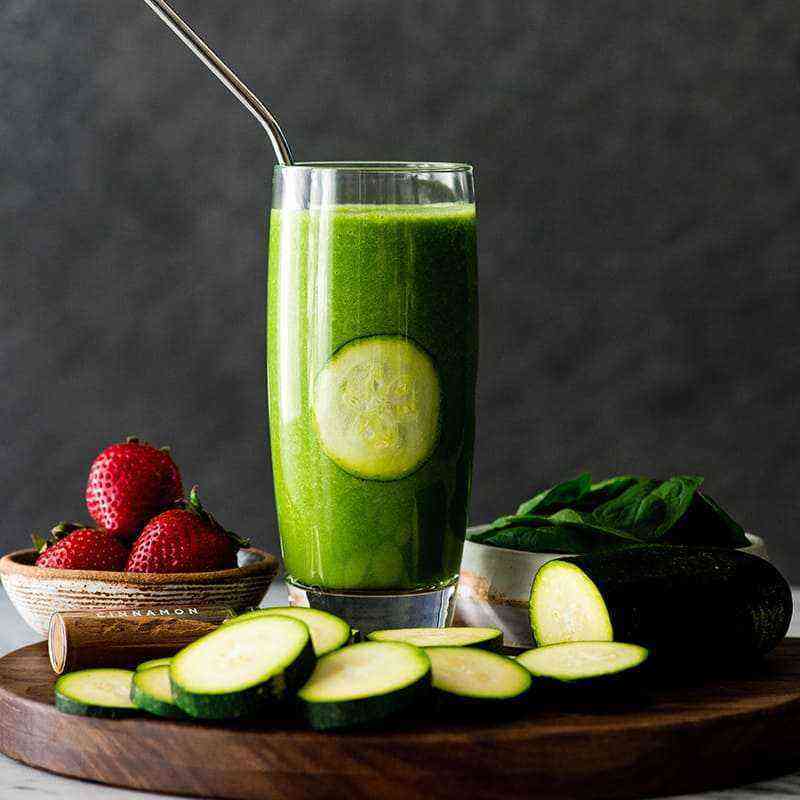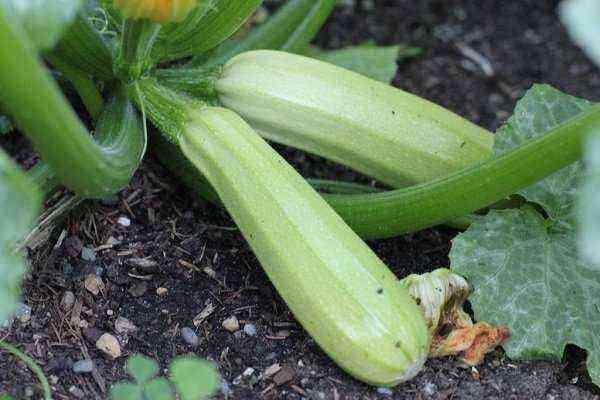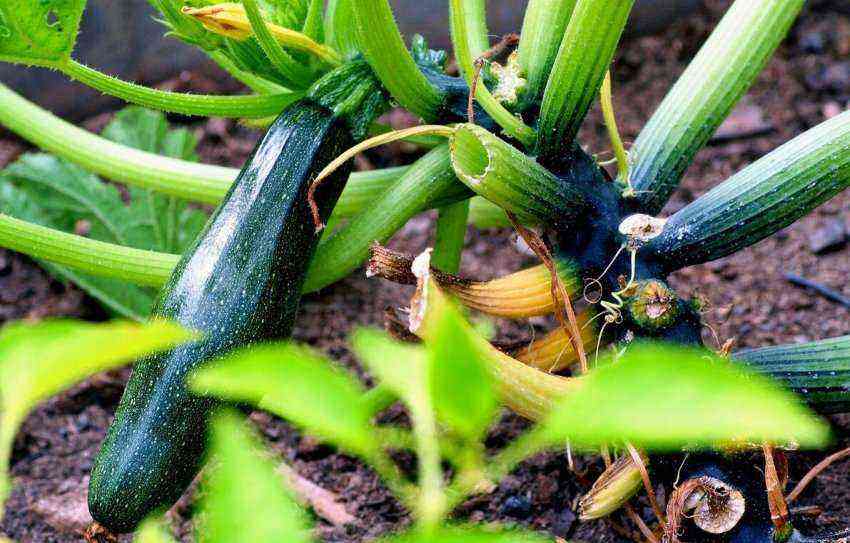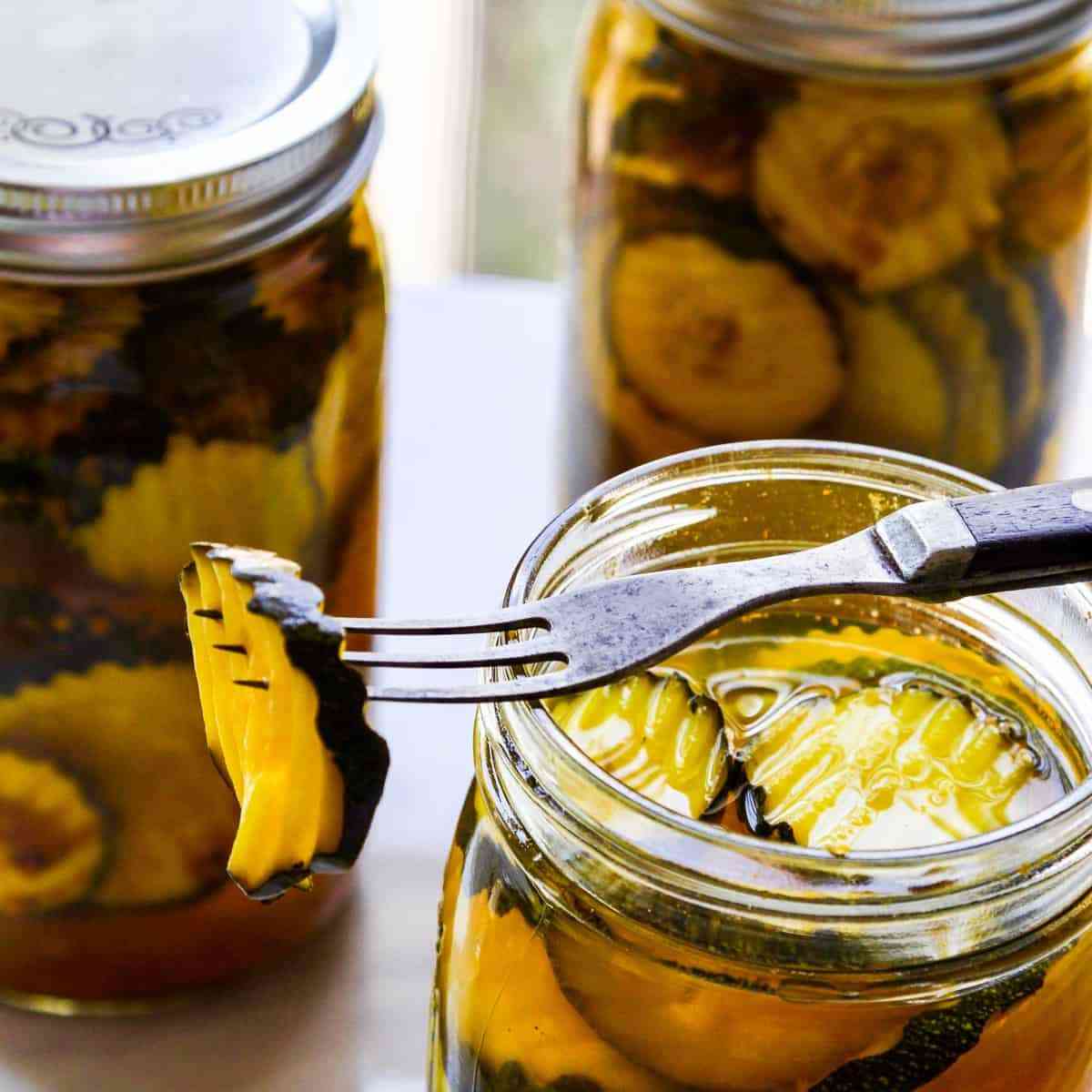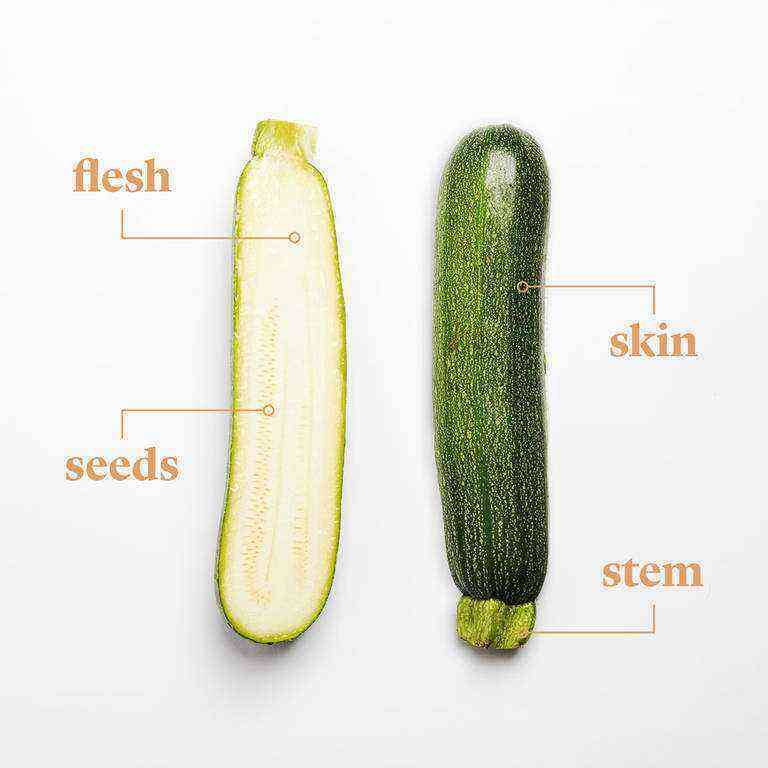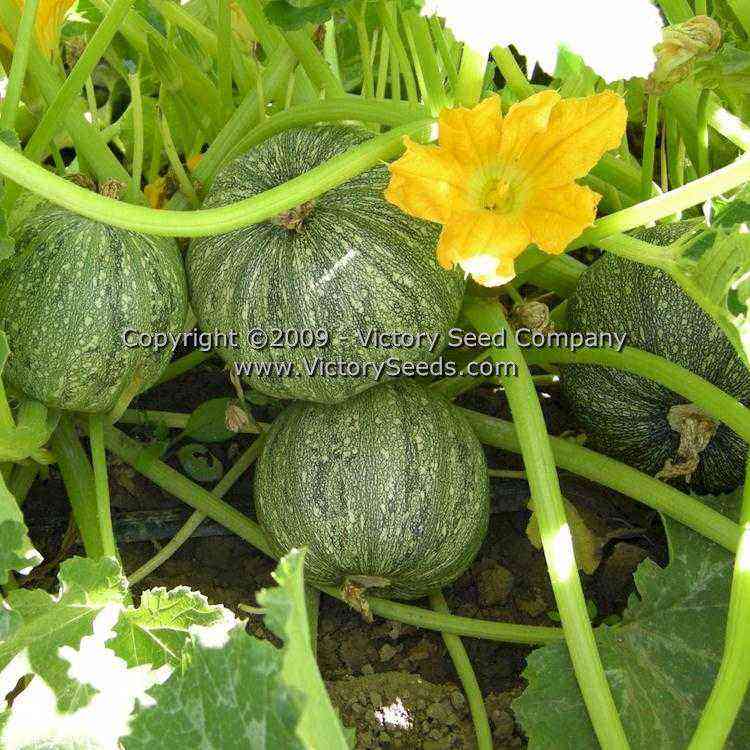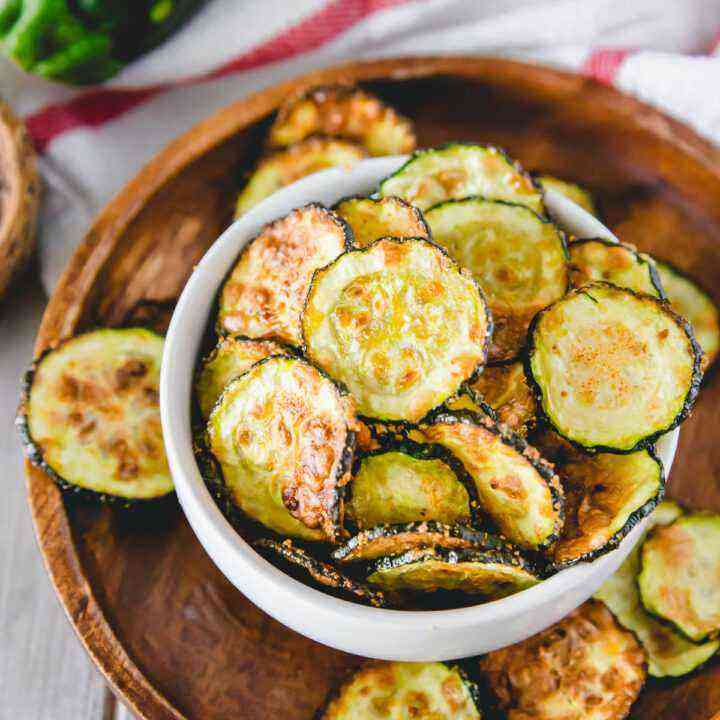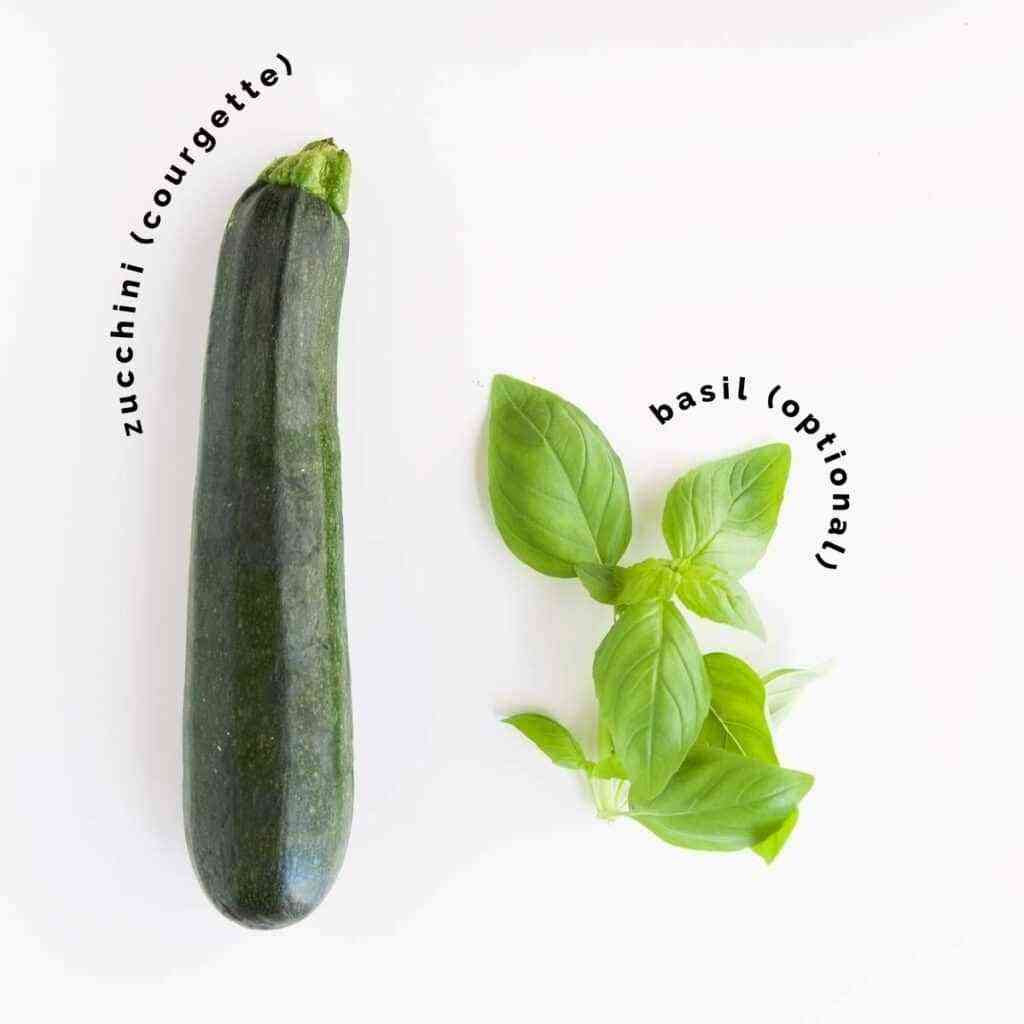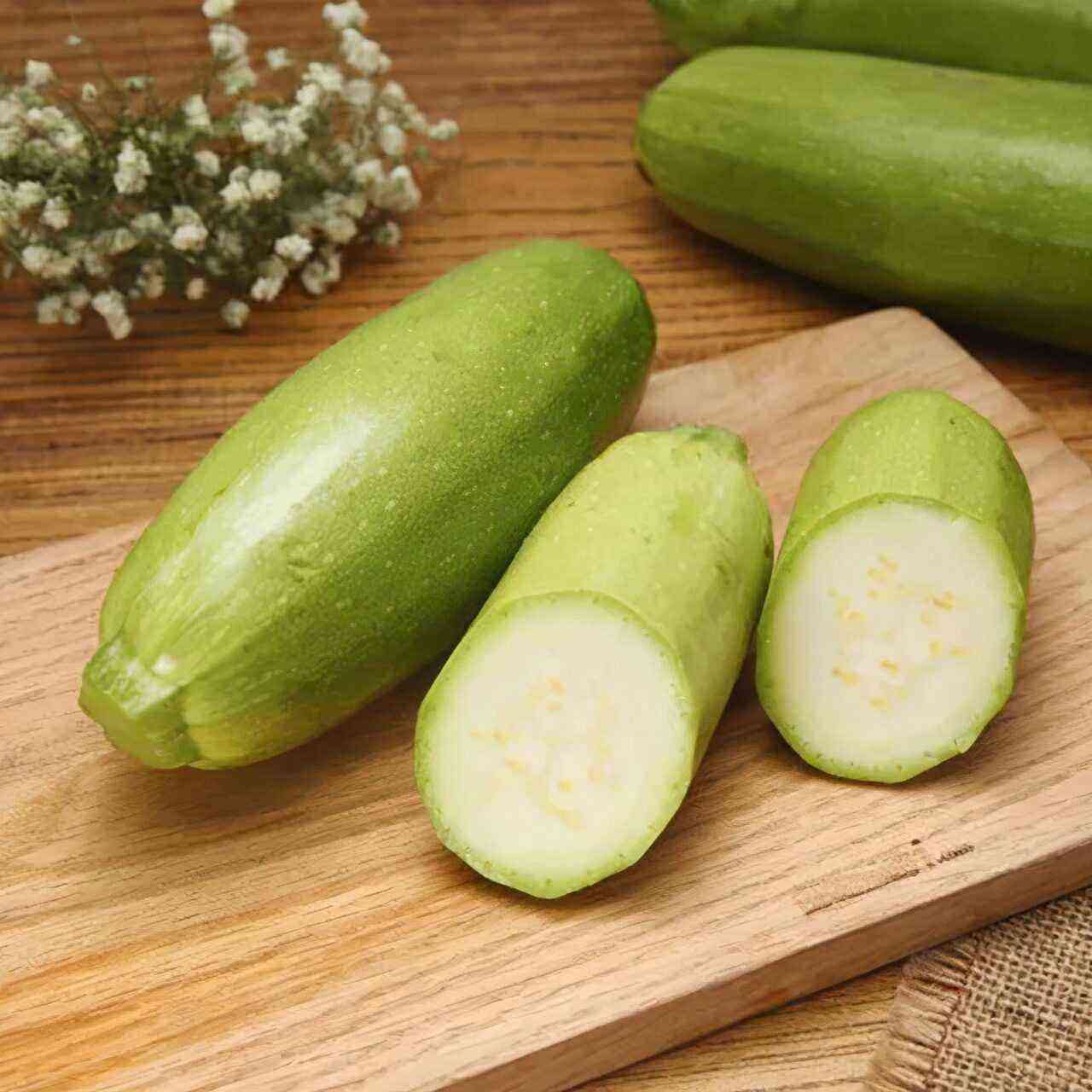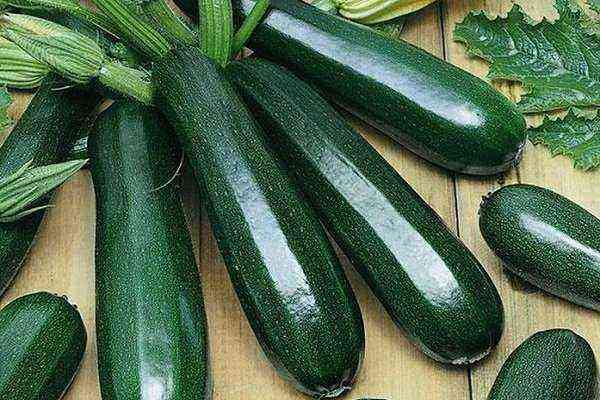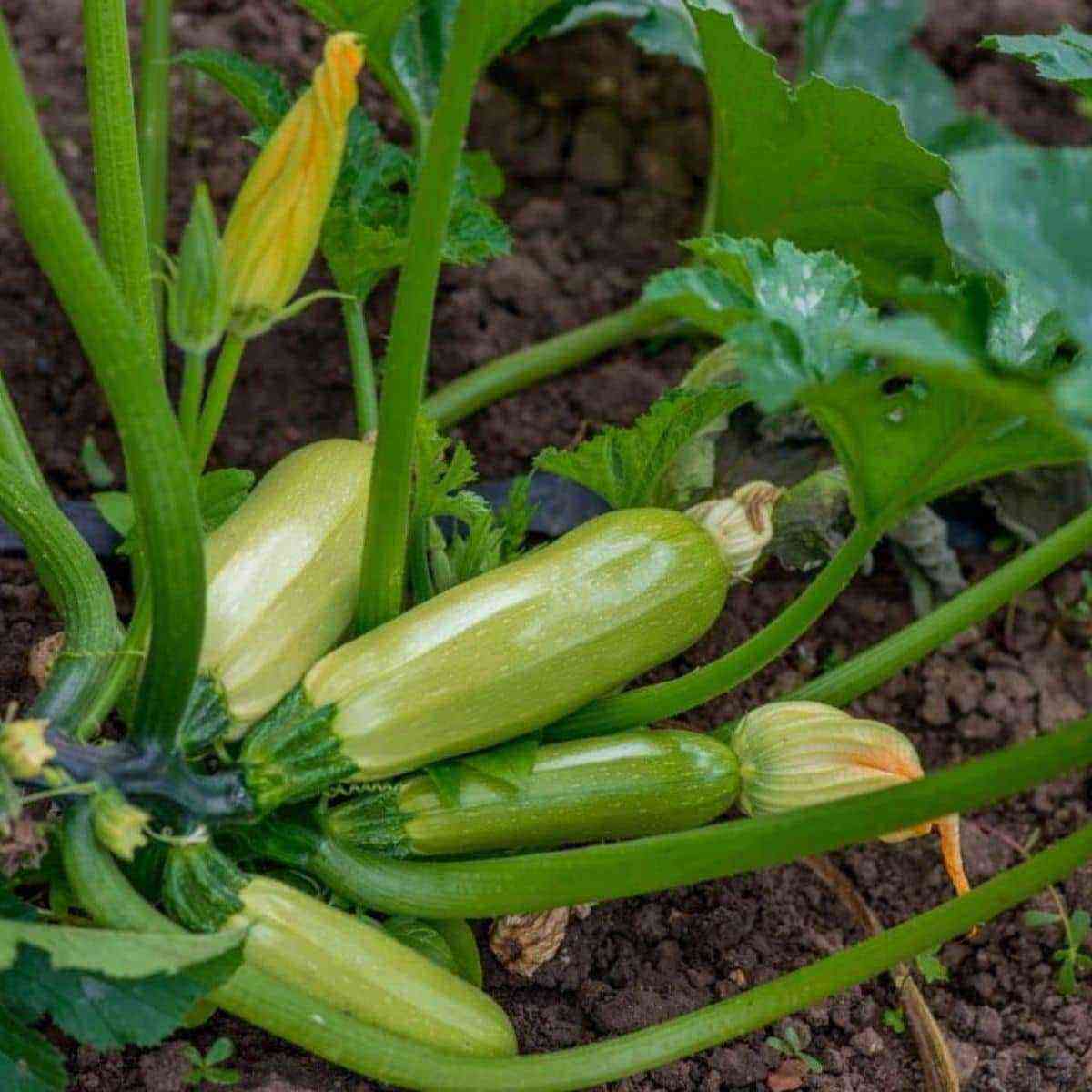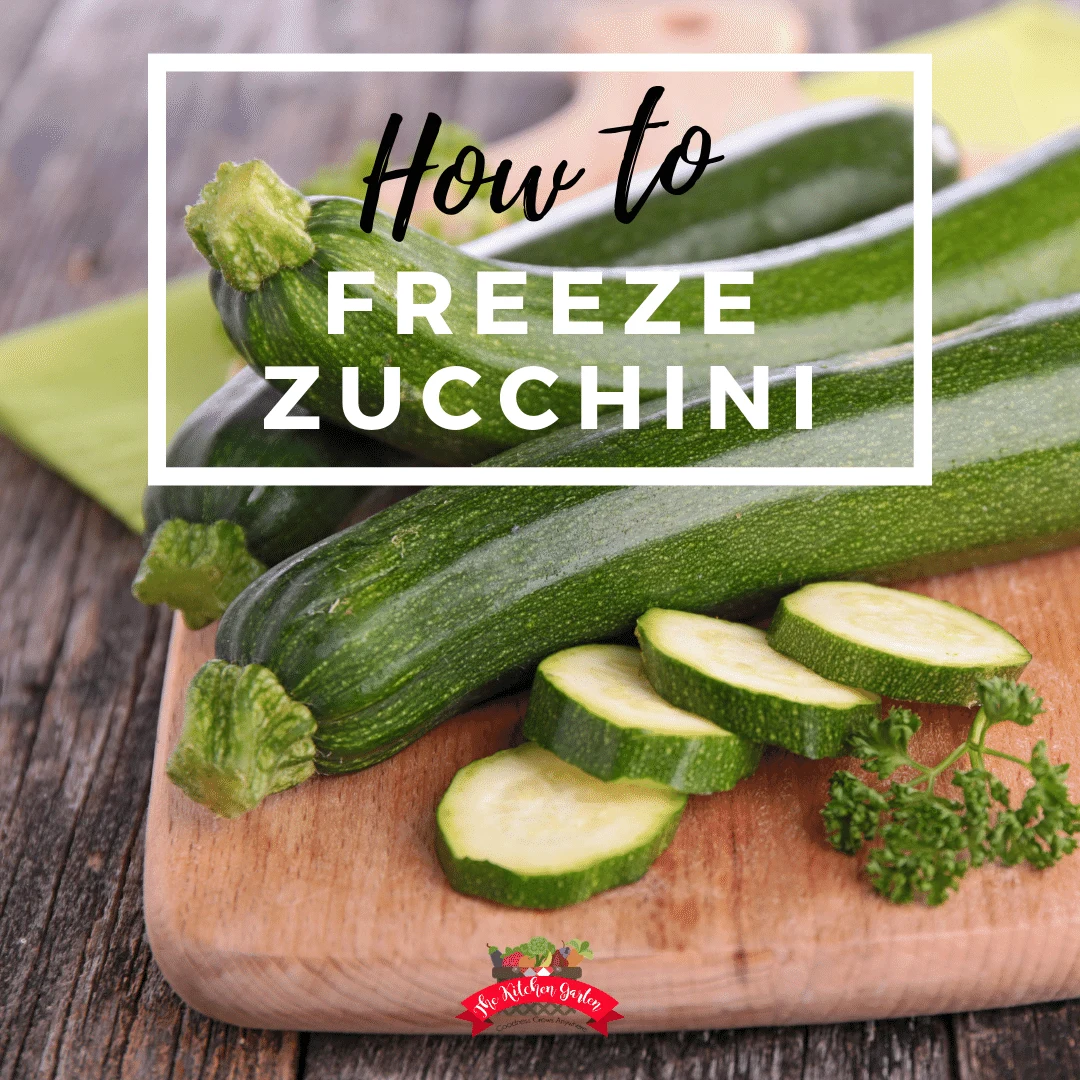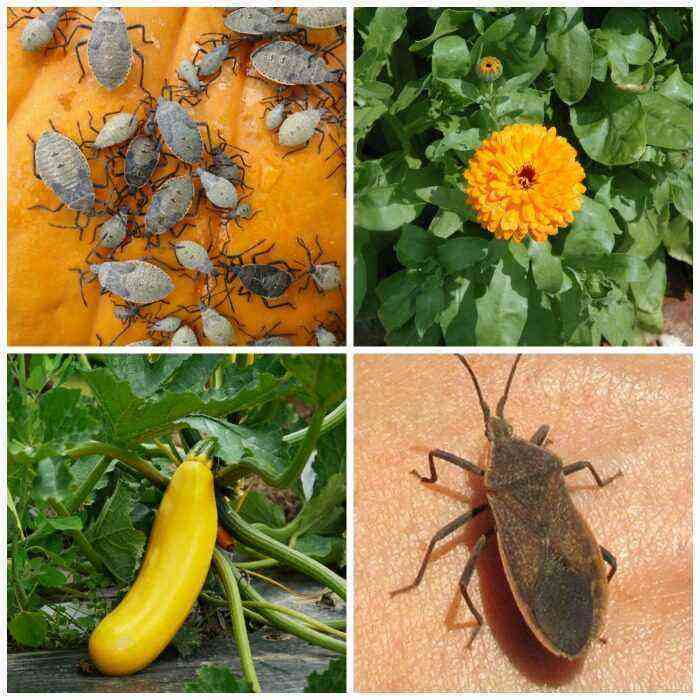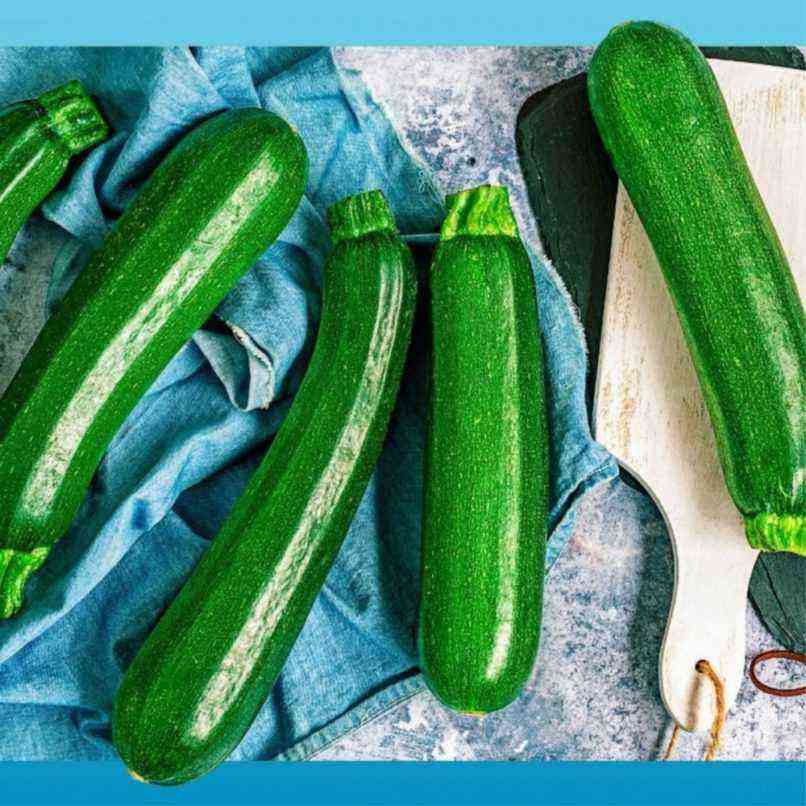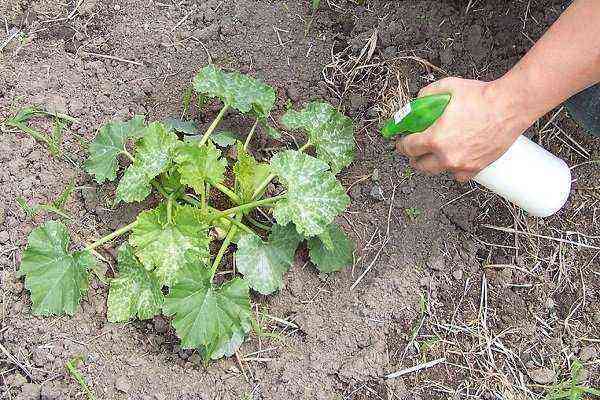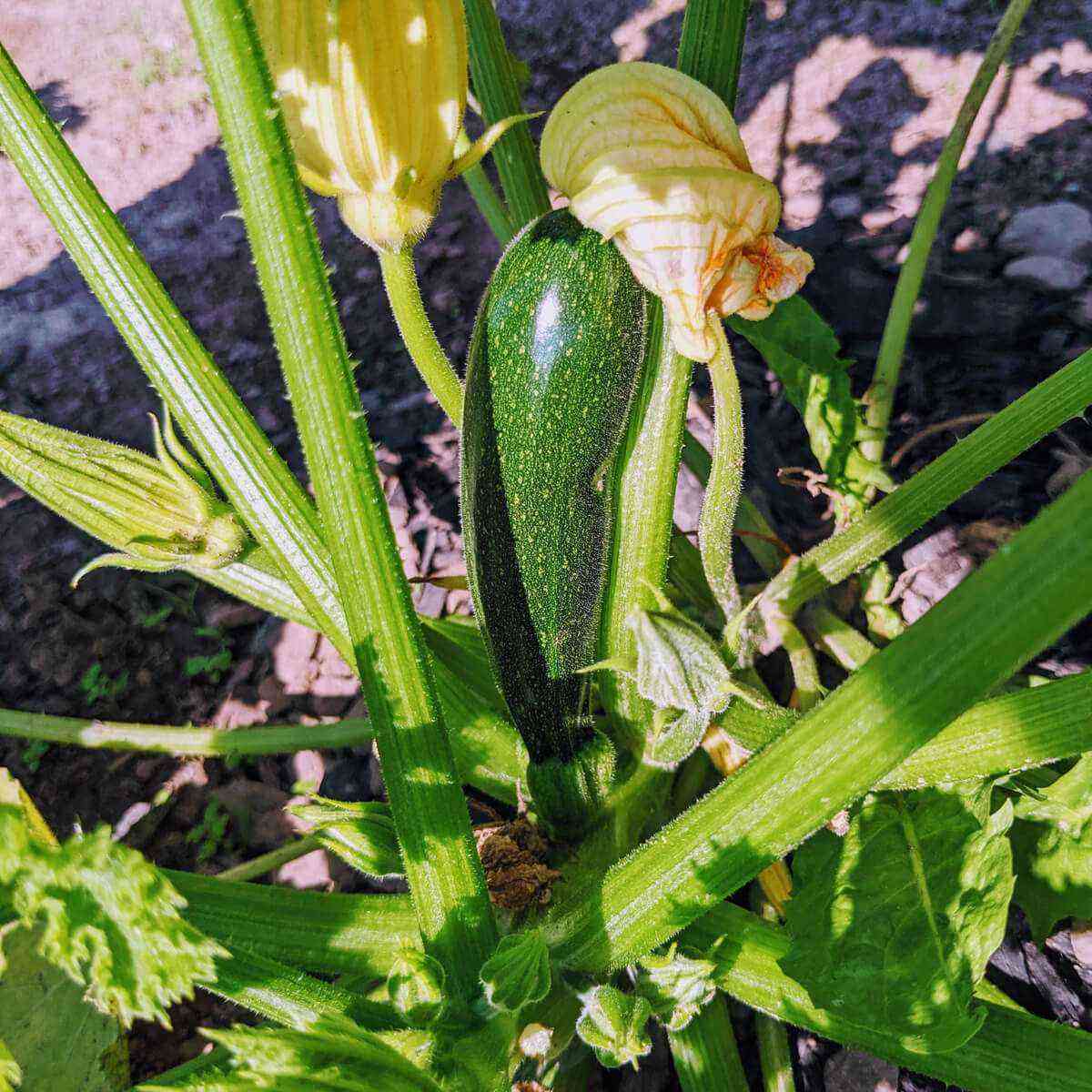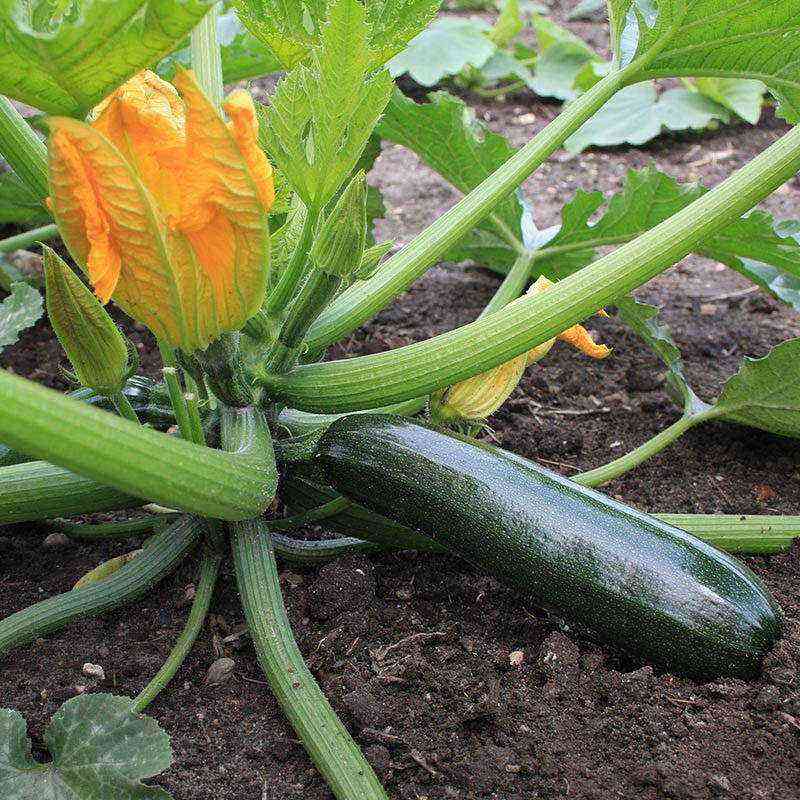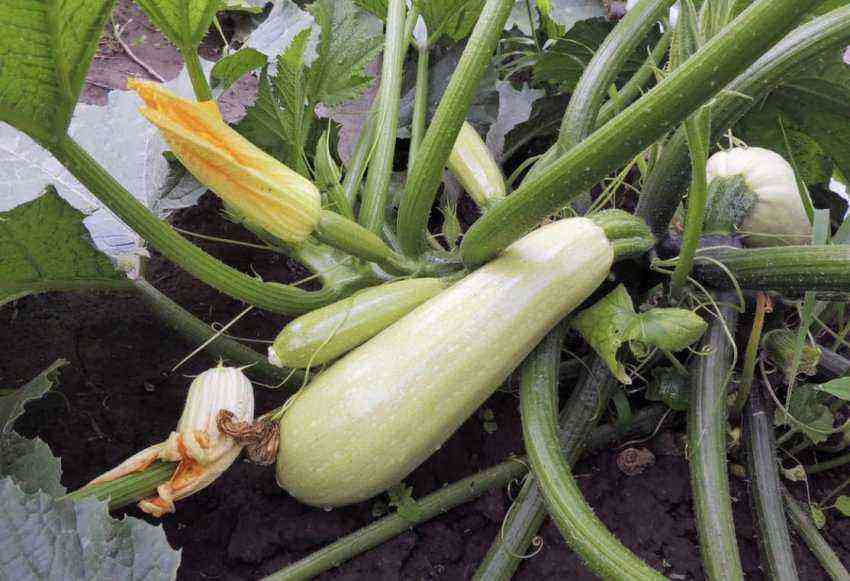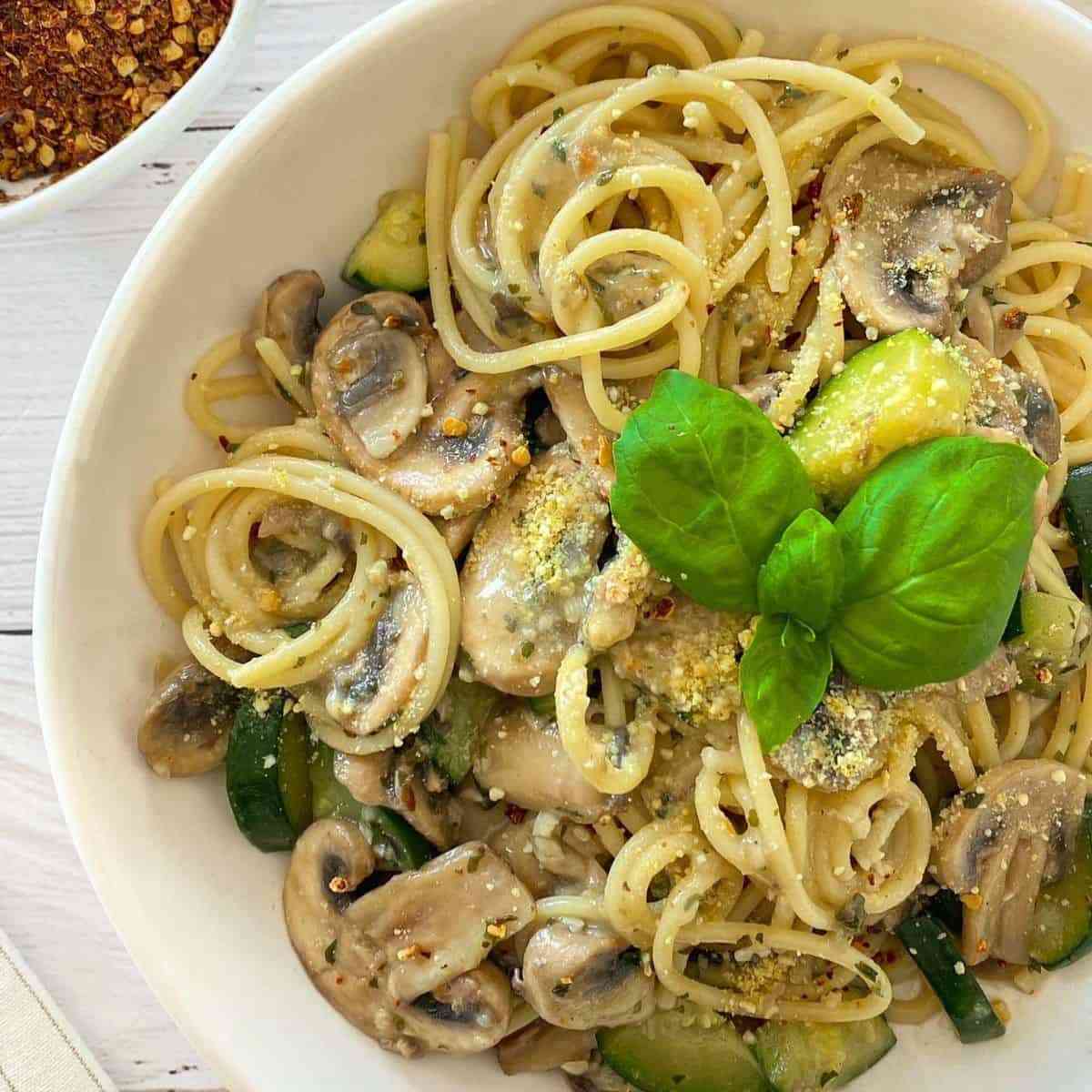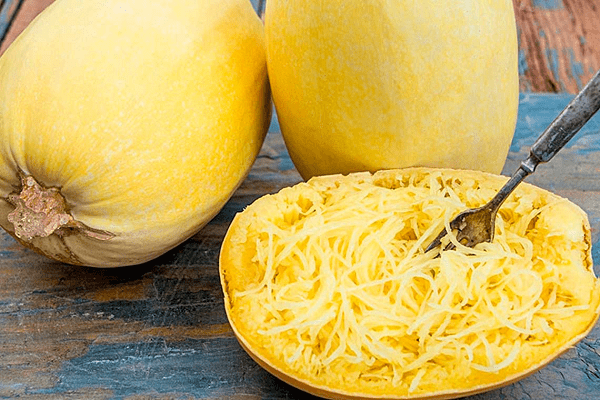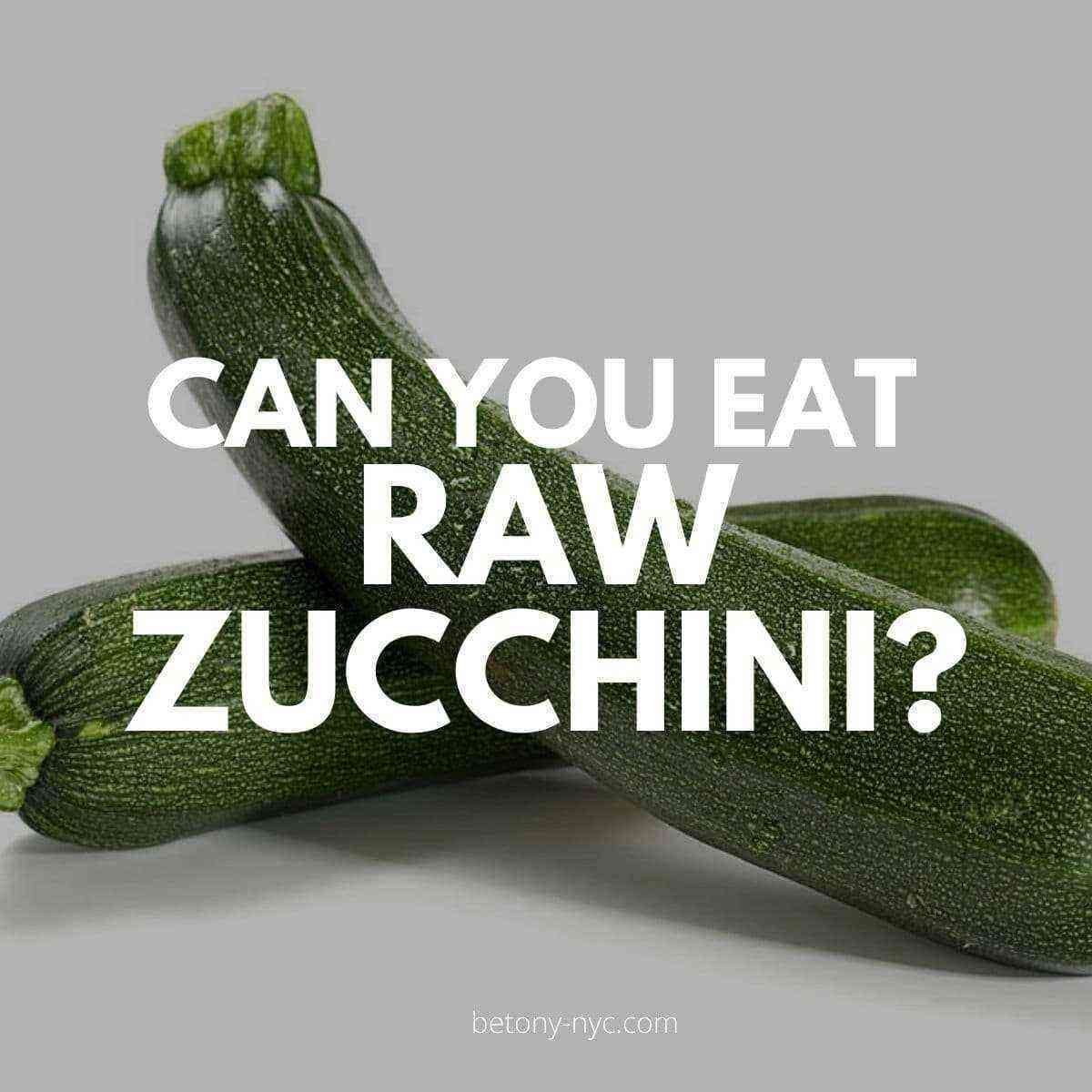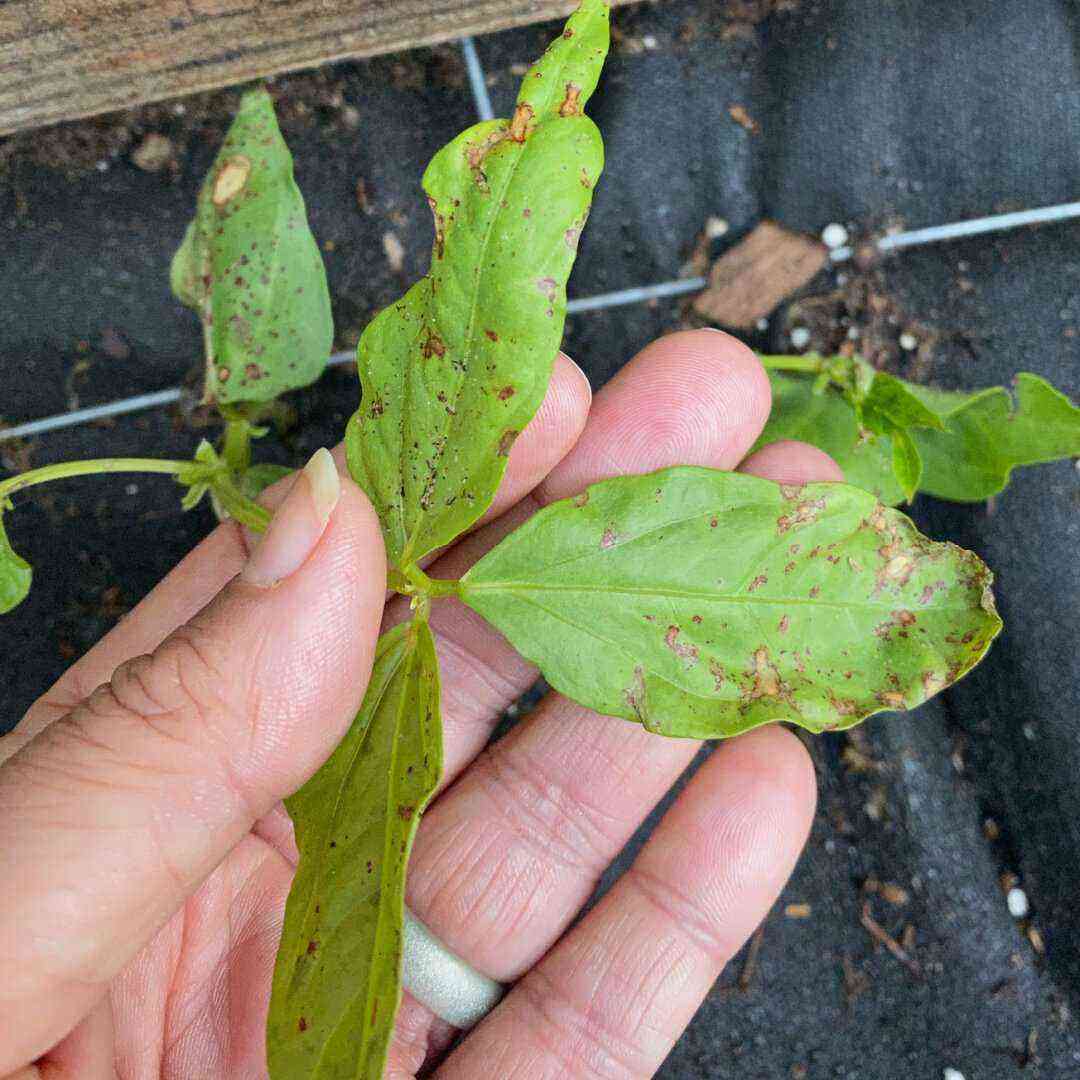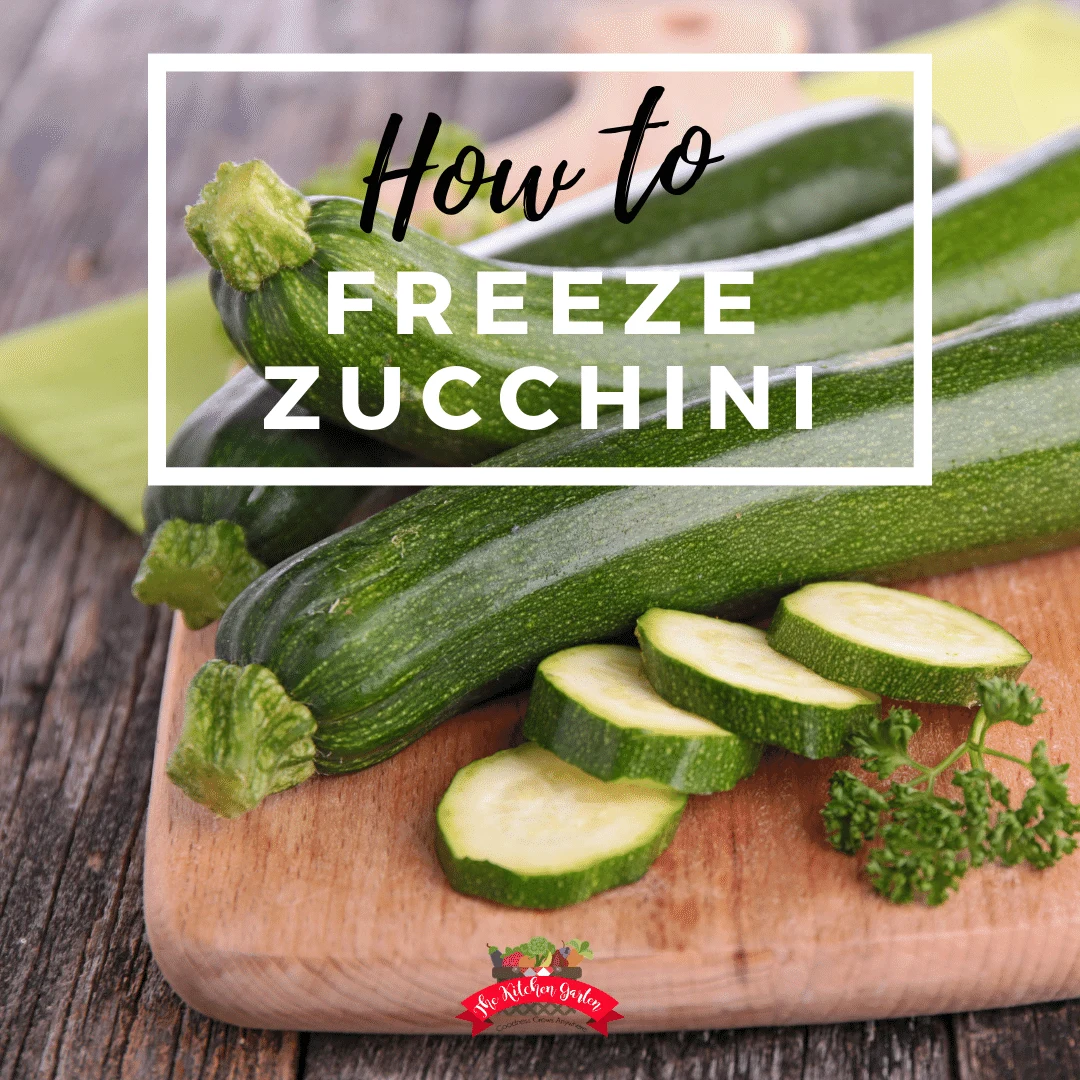The hybrid zucchini variety Kavili F1 is one of the leaders in world selection, as it attracts the attention of gardeners with several characteristics at once – ultra-early ripening, high yields, drought resistance and delicate taste. Read more about the characteristics and cultivation of this hybrid below.
Zucchini Cavili
Kavili squash is resistant to overripe
Kawili zucchini has juicy pulp
Variety description
Zucchini Cavili F1 (Cavili F1) – a hybrid of the Dutch selection from the company Nunhems (Nunhems), which is suitable for growing in open ground and in greenhouse conditions. Its characteristics are presented in the following table:
Parameter Description Ripening time Hydride is ultra-early. This means that mature fruits can be harvested already 40-45 days after the appearance of the first shoots. Pollination Kavili belongs to the group of plants that have parthenocarpy, that is, the zucchini is self-pollinating – able to form fruits without pollination (without the participation of pollinating insects). This property is especially useful for early cultivation in a greenhouse or in the open field during the rainy season, when bees and other insects no longer fly. Bush characteristics This type of zucchini belongs to bush plants with small internodes. The bushes are compact, so you can allocate small areas for them. Their roots are close to the soil surface and take up more space than the aerial part of the plant. The bushes are covered with dark green leaves with whitish spots. As on petioles, prickly pubescence is visible on them. Orange flowers are large and fade within 24 hours. Both male and female flowers bloom on the same bush. Characteristics of fruits On average, the weight of one fruit is 280-320 g, but sometimes specimens weighing up to 500 g come across. They grow up to 16-22 cm in length. Homogeneous zucchini are characterized by a regular cylindrical shape and have a thin light green skin. The pulp itself is white in color, has a delicate and juicy texture, as well as a high sugar content. It can be used in cooking even raw. In addition, the fruits are suitable for canning. Benefits Fruits are rich in vitamins (groups B, A, C, E), biotin, nicotinic acid and minerals (zinc, magnesium, potassium, phosphorus). Due to this, they have a positive effect on the human body – they normalize the water-salt balance, improve the functioning of the digestive system, produce a diuretic and choleretic effect, lower cholesterol, and improve the condition of the skin. Thus, it is an excellent product for a dietary and balanced diet. Productivity Despite the compactness of the bushes, with proper care, the yield is at least 7-9 kg per 1 sq. m. The first harvest can be harvested 1,5 months after germination. The variety is distinguished by the duration of the return of fruits – they can be harvested almost the entire July and half of August, and in some cases the plant forms fruits until the cold weather.
A distinctive characteristic of Kavili lies in the resistance of the fruit to overripe. Thanks to this, untimely harvested zucchini, reaching a weight of 1,5 kg, retain all their taste.
Features of cultivation Cavili zucchini is unpretentious in cultivation, but needs light and warmth. If stressful conditions prevail during growth (frequent rains, heat), then fruits can form without pollination. The plant itself is resistant to powdery mildew. The variety is labeled F1, that is, it is a hybrid, and the gardener will not be able to independently collect seeds for planting next season. About 1-8 thousand seeds will be required per 10 hectare of land. Their guaranteed germination is 85-93%.
Briefly, the characteristics of the Cavili hybrid are described as follows:
Landing methods and dates
Zucchini of Dutch origin can be grown in two ways, on which the optimal timing of planting will depend:
- Through direct sowing in open ground. In warm regions, the crop can be easily grown outdoors by planting seeds in cultivated soil. Sowing can be carried out in early May, if the air temperature has reached +18°C, and the soil has warmed up to a depth of 5-7 cm to +12°C. Depending on weather conditions, the landing can be carried out until the beginning of June.
- seedling way. Cultivation of zucchini using this technology will allow you to get an early harvest. In this case, the seeds can be sown for seedlings in late April or early May. When the temperature is stable above + 18 ° C, seedlings with 2-3 leaves can be transplanted to a permanent place at the rate of 3 bushes per 1 sq. m.
Regardless of the method of cultivation of Kavili, for the maximum extension of the fruiting period, seeds or seedlings of zucchini can be planted in 2 or 3 doses. The time period is 2-3 weeks.
Where to plant zucchini?
The culture will bear fruit well only when cultivated in a suitable place, prepared in accordance with a number of rules.
Site Selection
The place for the cultivation of zucchini should be flat, well lit by the sun and protected from the winds. It is better not to grow it in flooded and wetlands, that is, it is desirable that groundwater does not pass close to the surface.
From the point of view of the mechanical composition of the soil, it should be light and with neutral acidity (pH 6,5-7). In this regard, fertile sandy and loamy soils are the best option. If necessary, its acidity can be reduced by adding powdered chalk or dolomite flour. The culture will bear fruit poorly on heavy, dense, depleted and cold soils.
It is equally important when choosing a place for growing zucchini to take into account the rules of crop rotation, according to which the following crops are the best predecessors for it:
- potatoes;
- bow;
- cabbage;
- beans;
- peas;
- tomato;
- winter wheat.
Invalid predecessors include:
- zucchini of any kind;
- squash;
- cucumbers;
- pumpkins, etc.
Violation of the rules of crop rotation will lead to the occurrence of diseases and lower yields.
Soil Preparation
Having chosen a site taking into account all the above recommendations, you can begin to prepare the soil, which should be carried out in the fall to better saturate the land with organic and mineral fertilizers. To do this, the site must be dug to a depth of 30-35 cm, removing all plant debris and weeds. In this case, you should not break the clods. For every sq. m of fertile soil should be applied such top dressing:
- 6-8 kg of compost or rotted manure;
- 50-60 g superphosphate;
- 50-60 g of potassium salt.
Many summer residents prefer to sow green manure after harvesting, which, after cutting, rot under a layer of snow and saturate the soil, so re-fertilization is no longer required in spring.
In the spring, 7 days before sowing, the earth should be dug up again to a depth of 25-27 cm, introducing nitrogen-containing top dressing – 50-60 g of ammonium nitrate per 1 sq. m. To confirm the readiness of the soil for planting zucchini, you need to take a little earth in your fist, squeeze it slightly and throw it. If the lump crumbles, then the soil is well prepared, and you can start sowing. If the waterlogged soil only flattens when it falls, planting should be delayed.
A low-lying area needs to be dug to a depth of 15 cm and beds should be formed with the following parameters:
- height – 20-30 cm;
- width – 100 cm;
- slope – to the south for better heating of the soil.
Zucchini will grow well in beds with insulation. To prepare them, you need to make grooves 30 cm deep, into which you put compost and sprinkle it with a 20 cm layer of soil.
If the site was not cultivated properly in the fall, it should be fertilized in the spring according to the type of soil:
Soil type Fertilization per 1 sq. m Peat 3 days before planting, add 2 kg of compost, a bucket of turf, 1 g of superphosphate, 20 g of potassium sulfate and 8 g of ash. Dig up the site and pour copper sulfate (5 g per 200 ml of chicken manure and 10 liters of water) at the rate of 3 liters per 1 sq. m. At the end, cover the bed with foil. Clay Add 3 kg of sand, sawdust, peat and humus. From mineral fertilizers, add 20 g of superphosphate, 18 g of nitrophoska and 8 g of wood ash. Light loam Apply the same fertilizer as in the case of clay soil, but excluding sand. Sandy Add 3 kg of sawdust and humus, as well as 2 buckets of turf and peat to retain moisture. From mineral fertilizers, use the same as in the case of clay soil. Chernozem It is enough to fertilize with 3 buckets of turf, 0,5 buckets of sawdust, 40 g of superphosphate and 16 g of ash.
Seed pre-treatment
To cultivate Kavili zucchini in their backyard, gardeners can only use purchased seeds of the hybrid, which are often sold after undergoing the necessary processing. Therefore, no special preparation is required. However, some prefer to treat the seeds with a special nutrient composition Tyramine before planting. In this case, they will not need to be pre-soaked, since this procedure will only help wash off this composition.
Sowing seeds in open ground
To get a good harvest, it is not necessary to plant a lot of bushes. It is enough to grow several healthy and strong specimens on the site. The main thing is not to thicken the planting, because in this case the fruits will be poorly tied, which will negatively affect the yield of the Dutch zucchini. The plant will feel good in the garden if per 1 sq. m place 3 bush.
The optimal scheme for planting seeds in pre-prepared soil is as follows:
- hole depth – 5-6 cm;
- the distance between the holes is 70-80 cm;
- row spacing – 130-140 cm.
It is this planting scheme that will allow the bushes to fully develop. In each hole, you need to throw 3-4 seeds with a sharp end down. Then they should be watered abundantly, sprinkled with earth and lightly tamped. From above, it is advisable to mulch the bed with a layer of sawdust, peat or chopped hay. Landing can also be protected from possible return frosts with a film cover.
The first shoots will appear in 7 days. If several seeds sprout in each hole, then the strongest sprout should be left, and the rest should be cut off above ground level, and not pulled out, so as not to damage the sensitive nervous system of the plant.
How to sow seeds in open ground, you can clearly see in the video:
Growing Kavili seedlings
This technology involves the preparation of seedlings in a greenhouse or in an apartment, which will need to be transplanted to a permanent place in the future. We will consider each stage separately.
Preparation of seedlings
Seedlings do not tolerate picking, as this procedure significantly weakens their root system. It is best to grow them in separate containers – plastic or peat pots with a diameter of at least 20 cm. As for the nutrient mixture, you can purchase it at a garden store or prepare it yourself by taking loose and nutritious soil from your own garden.
Growing seedlings is carried out according to the following instructions:
- Pour the soil mixture for seedlings into pots and prepare holes to a depth of 3-4 cm.
- Throw 1 seed into each hole with the sharp tip down.
- Moisten the soil with a spray bottle and cover with glass or film, and then rearrange the pots on the windowsill of the sunny side.
- Until the first shoots appear, keep the seedlings at an air temperature of + 25 … + 28 ° C. After 4-5 days, when the first shoots appear, it is necessary to remove the protective coating and lower the temperature by a few degrees. At the same time, it is important to water the soil in a timely manner in order to prevent the formation of a dry crust on the surface.
- With the appearance of the first sprouts, move the zucchini to a brighter place, otherwise they will stretch excessively. They do not need additional lighting.
- A week before transplanting into open ground, seedlings must be hardened off. To do this, the pots need to be moved to a cool room (balcony, veranda), where the daytime temperature is kept within + 16 … + 18 ° C, and at night – not lower than + 13 ° C. Cold wind and drafts are unacceptable.
Transplantation in open ground
At the age of 20 days, seedlings with 2-3 true leaves can be transplanted to a permanent place. Before planting, the site should be watered abundantly and holes should be prepared according to the scheme 70×140 cm. Young plants should be deepened by cotyledon leaves.
After planting, you need to cover the seedlings with a protective coating, pulling a dense transparent film over the wire arcs. On sunny days, it must be regularly lifted, gradually preparing the young plant for new growing conditions.
Features of growing zucchini in a greenhouse
In cool climate regions, it is advisable to plant seeds in a greenhouse. To do this, you can use both the seedling method and direct sowing of seeds in the ground. The first technology is more attractive, since it allows to reduce the fruit ripening period by almost 2 weeks. In any case, seeds and seedlings should be planted in the same way as in open ground. To increase productivity, the following recommendations should be considered:
- The soil in the greenhouse for zucchini should be prepared in the fall. To do this, you need to dig it up and close up fertilizers to a depth of 8 cm – nitroammophoska, superphosphate and manure. If mineral top dressings were not made in the fall, they can be patched directly into the holes, and then mixed with the ground. Under one plant, it is enough to add 30-40 g of nitroammophoska. As for manure, it can only be applied in advance.
- At the time of planting, the soil temperature should be kept within + 20 … + 25 ° C, and the air temperature should be + 23 ° C during the day and not lower than + 14 ° C at night.
- During the development period, the plant can not be fed if all the nutrients have been added to the soil. This is due to the fact that under greenhouse conditions the aerial part of zucchini develops quickly, and additional stimulation can only lead to the growth of leaves and shoots. In turn, this will negatively affect the formation of ovaries and the yield of the variety.
How to grow Kavili in warm beds
In regions with a cool climate, such facilities as warm beds have become very popular. Their advantages are as follows:
- allow you to get an early harvest;
- do not require fertilization during the development of the plant;
- greatly facilitate the care of the bushes;
- protect the crop from the threat of freezing;
- involve planting both seeds and seedlings.
As a disadvantage of this method, one can single out the laboriousness of preparing the beds. This is done in this order:
- Build a wooden box 50 cm high and wide. Install it in a well-lit place.
- At the bottom of the box, as a drainage layer, lay out a fine-mesh net, on which lay large organic debris that decomposes over a long period of time. It can be branches, rotten boards, cardboard and paper.
- Pour the earth into the box with a layer of about 3 cm.
- Throw plant waste on the ground in the form of weeds, cut grass, rotten vegetables or other food residues. The optimal height of such a layer is 10-15 cm.
- Again fill the ground, but already with a layer of 10 cm.
- Lay out the manure in a layer up to 10 cm. It can also be replaced with vegetable waste.
- At the end, pour the earth with a layer of at least 20 cm.
Such a bed needs to be prepared in the fall so that organic waste can properly decompose. In the spring, you can plant the Kavili zucchini according to the previously described methods.
landing care
The Cavili hybrid is unpretentious in care, but requires the timely implementation of a number of agrotechnical measures. We will consider each of them separately.
Watering
The soil under the bushes should always be moderately moist, but dampness should not be allowed, as it can lead to the development of fungal diseases. Before fruiting, zucchini should be watered once a week at the rate of 1-10 liters per 12 sq. m. When the fruits begin to set, zucchini should be watered every 1-2 days at the rate of up to 3 liters per 15 sq. m. The soil must be kept moist at a depth of 1 cm.
For watering zucchini, you need to use separated warm (25 ° C) water. To prevent rotting of young ovaries, you need to pour it only under the root.
Watering should be done in the evening, when solar activity is on the decline.
Loosening and mulching
For the first time, the soil must be loosened after germination or 2-3 days after planting seedlings in the ground. Further, this procedure must be carried out after watering or rain. Loosening should be light and superficial to prevent crusting. Between the rows, the earth should be loosened to a depth of 14 cm, and under the bushes – 5 cm, otherwise you can damage the delicate roots close to the soil surface.
In the process of loosening, it is also necessary to carry out weeding of the site, destroying all weeds.
To prevent the rapid evaporation of moisture, it is necessary to carry out the mulching of the beds. For these purposes, the ground can be sprinkled with crushed hay, peat chips or sawdust, and then lightly tamped.
Thinning
If the zucchini grows in a shaded area, it is worth thinning out its bushes so that the sun’s rays can freely illuminate the entire planting. For these purposes, it is enough to remove a few of the largest leaves. In particular, this procedure should be carried out during the period of flowering and tying root crops.
To prevent rotting of zucchini, it is worth placing pieces of film or slate under them.
Feeding
It is enough to feed the Kavili variety three times – during the formation of buds, at the stage of flowering and in the phase of fruit set. If the soil has been cultivated properly, you can get by with only organic fertilizer.
To prepare green fertilizer, 1/2 of the barrel should be filled with mowed grass or weeds, filled to the brim with water and left for a week, stirring daily. This composition must be filtered and diluted with water in a ratio of 1: 8. Water the plant with them at the rate of up to 1 liter for each bush.
Such top dressing can be alternated with slurry, which will need to be diluted with water in a ratio of 1:10. Water the plant also at the rate of up to 1 liter per bush.
Top dressing should be introduced only after watering the zucchini and under the root. In no case should droplets of the solution be allowed to fall on the tops, because after themselves they will leave burns that are dangerous for the whole plant.
Protection against diseases and pests
In order to protect zucchini in the garden from the invasion of pests and diseases, one should not allow violations of the rules of crop rotation, thickened plantings and waterlogging of the soil. However, even with proper agricultural practices, the plant may look sick. He can be affected by such ailments:
- Peronosporoz. Rounded or angular white spots appear on the leaves, which gradually expand their borders and turn brown. On the underside, they are covered with a grayish-olive coating. Over time, the tops crumble, leaving behind only cuttings. In the fight against the disease, the plant should be sprayed with a 0,2% suspension of Zineb. Of the other drugs, Zaslon and Oksikhom will help.
- Antraknoz. It appears on all above-ground parts of the zucchini. Leaves sunken spots of pale pink color on fruits. Yellow-brown spots appear on the leaves, which gradually grow, causing the leaf plate to curl and die. From anthracnose, zucchini should be sprayed with a 1% solution of Bordeaux liquid or a 0,4% suspension of copper oxychloride.
As for pests, the following insects are dangerous for Cavili:
- spider mite. Sucks out the nutrient juices from the plant, which can lead to its complete death. It manifests itself in the form of small white dots and a light cobweb on the leaves, especially on the underside. With a strong invasion of pests due to multiple damage, the plant turns white. Ticks can be fought with a number of drugs – Iskra, Confidor or Phosbecid. With severe lesions, Karbofos will help. To scare away the tick, marigolds can be planted near the squash planting. Among folk remedies, a composition of 1 cup chopped onion, 1 tbsp. l. hot red pepper and shavings 1 bar of laundry soap per 10 liters of water.
- Melon Caviar. Pest colonies are located on the underside of the foliage, on stems and ovaries. The aphid sucks the juices from the plant, causing the tops to curl and the ovaries to fall off. If you ignore such signs, the plant may dry out. In the fight against pests during the growing season, the bushes should be sprayed with a solution of Karbofos (60 g per bucket of water).
To protect the planting of zucchini from various pests, in the fall the site must be thoroughly cleaned of plant debris.
Harvesting and storage of crops
It is necessary to pluck the fruits when they reach a length of 22 cm. Overgrown specimens, although they will not lose their taste, will stop the growth and development of the bush, pulling the plant’s strength onto itself. In turn, this will negatively affect the yield.
If zucchini is supposed to be eaten or processed immediately, then they should be harvested at a young age, cut off right at the base. You can store such a crop for no longer than 14 days at temperatures up to 2 ° C. After this period, the fruits will lose their taste, become rough and rot.
If you plan to lay zucchini for long-term storage, then you need to cut them in a ripened state along with a long stalk. They can be stored in the cellar for up to 2 months if laid out in a single layer on a wooden deck, and dry straw is sprinkled between them. Zucchini can also be stored in an apartment, but for this, each fruit will need to be wrapped in paper and kept on a balcony or in a cool, dark place, away from the wall with a heater. In the refrigerator, the vegetable can lie for up to a month.
Pros and Cons of Cavili
The advantages of this hybrid variety of zucchini are as follows:
- is ultra-early;
- has a compact size, so it does not take up much space in the garden;
- gives a bountiful harvest;
- characterized by a long period of fruiting;
- not afraid of many fungal diseases, including powdery mildew;
- has a universal purpose.
Of the shortcomings, one can only single out that the variety is a hybrid, therefore, nothing can be grown from the collected seeds. So, seed material can only be purchased at a garden store.
Reviews
Lyudmila Petrovna, 45 years old. Together with other zucchini, I planted 3 Kavili seeds. They successfully sprouted, the flowers turned out to be predominantly female, and there were practically no empty flowers. The yield was high. The fruits turned out to weigh under a kilogram, although it was written on the package that the zucchini should weigh no more than 320 g. The pulp is tasty and tender. Everyone can recommend this variety. Alina Timofeevna, 52 years old. I grow kawili every year. One of the most compact early maturing varieties. The fruits are delicious and keep for a couple of months. I did not encounter any particular difficulties in care. Sergey Andreevich, 38 years old. Of the hybrid varieties of zucchini, only Kavili grew. The fruits are tied early and plentifully, but it seemed to me that the bushes bear fruit in jerks, which is not very convenient. But the plant is compact and very neat, unpretentious in cultivation. Svetlana, Irkutsk
Having read gardeners like you, I was flattered by Cavili, planted and terribly disappointed. There is simply no worse zucchini – it grows poorly, the flowers are predominantly male, the ovaries rot, fall off. The taste of zucchini is watery and sour. I do not advise anyone.
The experience of growing the Kavili variety is described in the video below:
Cavili F1 is a popular variety of Dutch selection intended for ultra-early mass production. The hybrid is attractive for many characteristics, especially parthenocarpy, high productivity, fruit marketability and a long fruiting period. Zucchini can be grown in a greenhouse or outdoors with minimal effort to care for it.
